Aminoglycoside tolerance in Vibrio cholerae engages translational reprogramming associated with queuosine tRNA modification
- PMID: 39761105
- PMCID: PMC11703503
- DOI: 10.7554/eLife.96317
Aminoglycoside tolerance in Vibrio cholerae engages translational reprogramming associated with queuosine tRNA modification
Abstract
Tgt is the enzyme modifying the guanine (G) in tRNAs with GUN anticodon to queuosine (Q). tgt is required for optimal growth of Vibrio cholerae in the presence of sub-lethal aminoglycoside concentrations. We further explored here the role of the Q34 in the efficiency of codon decoding upon tobramycin exposure. We characterized its impact on the overall bacterial proteome, and elucidated the molecular mechanisms underlying the effects of Q34 modification in antibiotic translational stress response. Using molecular reporters, we showed that Q34 impacts the efficiency of decoding at tyrosine TAT and TAC codons. Proteomics analyses revealed that the anti-SoxR factor RsxA is better translated in the absence of tgt. RsxA displays a codon bias toward tyrosine TAT and overabundance of RsxA leads to decreased expression of genes belonging to SoxR oxidative stress regulon. We also identified conditions that regulate tgt expression. We propose that regulation of Q34 modification in response to environmental cues leads to translational reprogramming of transcripts bearing a biased tyrosine codon usage. In silico analysis further identified candidate genes which could be subject to such translational regulation, among which DNA repair factors. Such transcripts, fitting the definition of modification tunable transcripts, are central in the bacterial response to antibiotics.
Keywords: Vibrio cholerae; antibiotic stress; epitranscriptome; genetics; genomics; infectious disease; microbiology; post-transcriptional regulation; queuosine; tRNA modification.
© 2024, Fruchard, Babosan et al.
Conflict of interest statement
LF, AB, AC, ML, BL, MD, QG, MM, FB, IH, HA, CF, EC, GS, VM, YM, ON, Vd, DM, ZB No competing interests declared
Figures





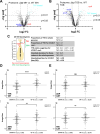

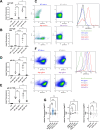






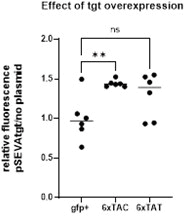
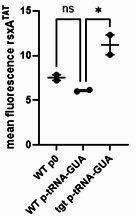
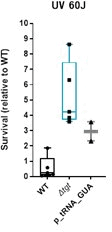

Update of
- doi: 10.1101/2022.09.26.509455
- doi: 10.7554/eLife.96317.1
- doi: 10.7554/eLife.96317.2
Similar articles
-
Molecular Coping Mechanisms: Reprogramming tRNAs To Regulate Codon-Biased Translation of Stress Response Proteins.Acc Chem Res. 2023 Dec 5;56(23):3504-3514. doi: 10.1021/acs.accounts.3c00572. Epub 2023 Nov 22. Acc Chem Res. 2023. PMID: 37992267 Free PMC article.
-
Identification of genes involved in low aminoglycoside-induced SOS response in Vibrio cholerae: a role for transcription stalling and Mfd helicase.Nucleic Acids Res. 2014 Feb;42(4):2366-79. doi: 10.1093/nar/gkt1259. Epub 2013 Dec 6. Nucleic Acids Res. 2014. PMID: 24319148 Free PMC article.
-
RpoS plays a central role in the SOS induction by sub-lethal aminoglycoside concentrations in Vibrio cholerae.PLoS Genet. 2013;9(4):e1003421. doi: 10.1371/journal.pgen.1003421. Epub 2013 Apr 11. PLoS Genet. 2013. PMID: 23613664 Free PMC article.
-
Codon-biased translation can be regulated by wobble-base tRNA modification systems during cellular stress responses.RNA Biol. 2015;12(6):603-14. doi: 10.1080/15476286.2015.1031947. RNA Biol. 2015. PMID: 25892531 Free PMC article. Review.
-
Queuosine tRNA Modification: Connecting the Microbiome to the Translatome.Bioessays. 2025 Feb;47(2):e202400213. doi: 10.1002/bies.202400213. Epub 2024 Nov 26. Bioessays. 2025. PMID: 39600051 Free PMC article. Review.
Cited by
-
Environmental Control of Queuosine Levels in Streptococcus mutans tRNAs.Mol Microbiol. 2025 Jan;123(1):48-59. doi: 10.1111/mmi.15336. Epub 2024 Dec 25. Mol Microbiol. 2025. PMID: 39719891
-
Are Bacterial Processes Dependent on Global Ribosome Pausing Affected by tRNA Modification Defects?J Mol Biol. 2025 Aug 15;437(16):169107. doi: 10.1016/j.jmb.2025.169107. Epub 2025 Apr 10. J Mol Biol. 2025. PMID: 40210524 Free PMC article. Review.
-
Uridine as a potentiator of aminoglycosides through activation of carbohydrate transporters.Sci Adv. 2025 Sep 5;11(36):eadw7630. doi: 10.1126/sciadv.adw7630. Epub 2025 Sep 5. Sci Adv. 2025. PMID: 40911672 Free PMC article.
References
MeSH terms
Substances
Associated data
- Actions
- Actions
Grants and funding
LinkOut - more resources
Full Text Sources
Medical

